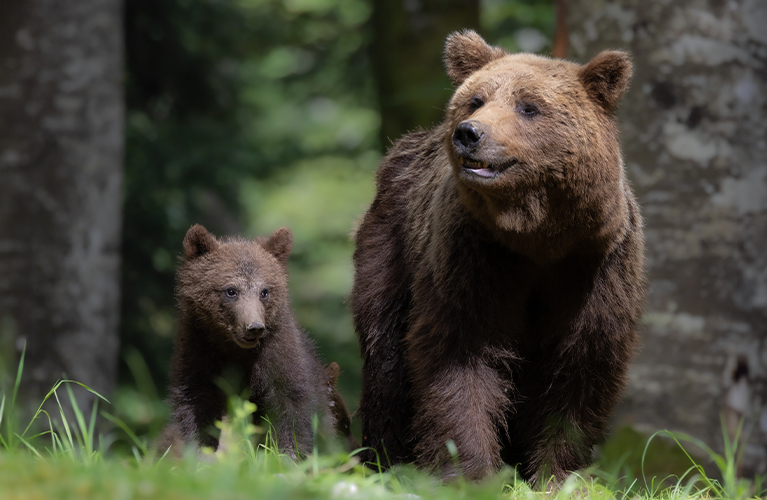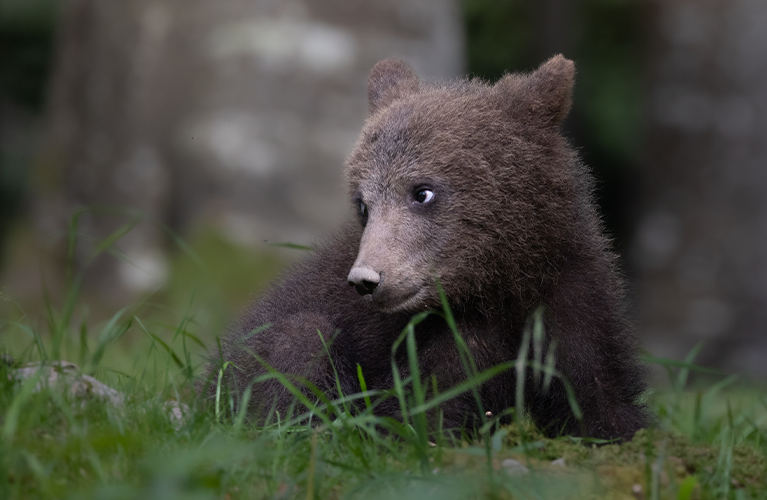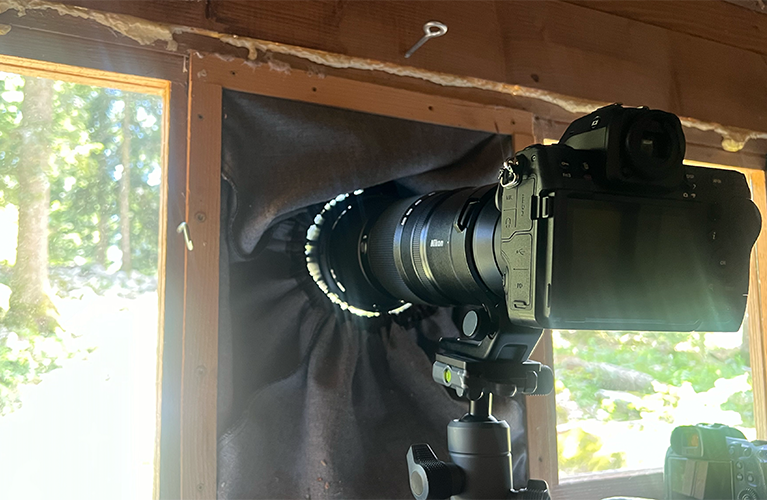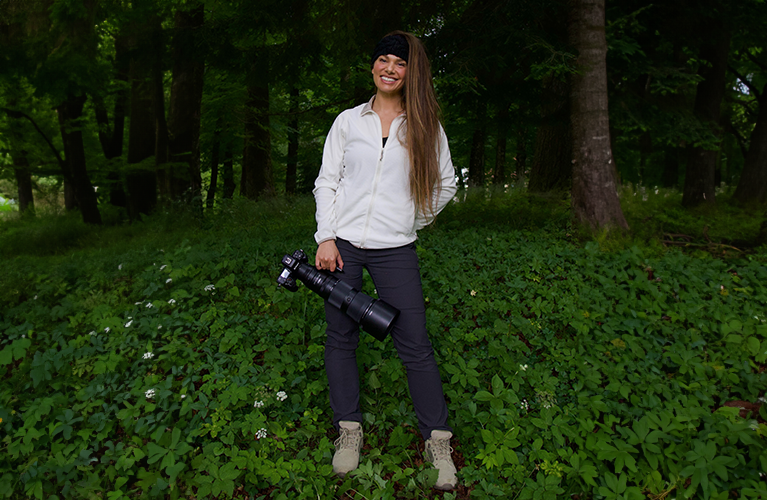
Into the Bear Forests of Slovenia with Hannah Stitfall
Is Slovenia a great place to spot wildlife?
Slovenia, a small but incredibly diverse and beautiful country in Central Europe, is one of my favourite wildlife filming destinations on the continent. With a very small human population of just over 2 million people, there’s plenty of space for nature and some of the most magnificent wildlife species; wolves, lynx, wild cats, red squirrels and pine martens can all be found here. The country itself has preserved many of its forests and is in fact one of the most forested countries in Europe, with over half of its landmass covered with trees. It is a true and untamed paradise for any wilderness lover or outdoor enthusiast. In addition to the woodlands, the country is home to a striking variety of other landscapes too, from the rugged peaks of the Julian Alps, to sweeping meadows and vast lakes; Slovenia's wilderness should be on any outdoor adventurer’s list!

Where can you find the European Brown Bear?

I have travelled here a few times now to film one of the most iconic species not only in Europe, but the entire world - the European brown bear. They can be found within the pristine forests of the Notranjska region which is part of the expansive Dinaric Alps, one of the most extensive and wild mountainous areas in Europe. These mixed forests are dense and are filled with fir, birch and spruce trees, the perfect habitat for brown bears as despite being Europe’s largest carnivore, the majority (around 80%) of a brown bear’s diet actually consists of tree nuts, fruits, grasses, plants and berries, of which these forests are plentiful. Here you will find one of the largest populations of brown bear in Europe, which is part of the larger Dinaric-Pindos bear population, extending through the Balkans and making this one of the best places in Europe to film these incredible creatures.
Each time I go here, I travel to the Slovenian Bears photo hides. Despite their size (adult males can reach up to 355kg in weight and some up to 2.2 metres when stood on their hind legs) and formidable reputation, brown bears are actually incredibly shy and reserved creatures. At the first sense of human presence, they’ll run back into the safety of the forests, which is why the team on the ground have established a network of photography hides throughout the mountainous forests. This ensures that the bears are not disturbed, and also gives the photographers the best chance to see them. Of course, this is a wild population so nothing is ever guaranteed, and that’s why when you do see the bears it’s even more special!
my most recent trip, I went to Slovenia for nearly two weeks; I wanted to give myself plenty of time, as it is the best time of the year to film cubs! A female brown bear will give birth to litters of usually between two to three cubs whilst hidden away in a den deep in the forest, between January and February time. The cubs will stay in the safety of the den until the spring when they take their first steps outside, always staying right by their mother’s side; the cubs will then stay with their mothers for between one and a half to two and half years, before they head off into the wildness on their own. During this time the mother will teach them everything they need to know about the wilds, so they are able to go and raise families of their own.
What should you wear for a wildlife filming trip in hot weather?
Each day I would go up to the photography hides for usually 6 hours at a time. It was an incredibly hot time of year, reaching 40 degrees on some days which can in itself be quite tiring – but you have to stay alert at all times. For this trip I was armed with my Craghoppers NosiLife range, as being in wooden hides in the thick forests during summer meant there were lots of mosquitoes! Thankfully, I didn’t get bitten once thanks to my gear; it was also very comfortable and breathable to wear on those scorching hot days! I will definitely be taking it on other wildlife filming trips when heading to warmer climates!
Despite it being the best time of year to film the bear cubs, as I mentioned, nothing is ever guaranteed which I’m always fully aware of when I go on a trip like this one. On my first day, after 6 hours in the hide I saw nothing, not even an adult bear, so you can imagine my sheer elation when on the second day of my trip, a mother with two tiny cubs appeared! They stayed in front of the hide for a good 40 minutes which meant I managed to get some lovely photographs and footage of the cubs, particularly one of them who had darker fur and was quite the character! Throughout the rest of my trip I was very fortunate with sightings and had three good days with cubs, so was very lucky indeed!
The dense and vast forests of Slovenia are a must for any wildlife enthusiasts and filmmakers eager to hopefully see these magnificent animals. It really is like stepping into another world, and feels like some of the last true remaining wildernesses in Europe. For anyone planning a trip there I would highly recommend Slovenian Bears as the team are fantastic; they put the wildlife first whilst giving photographers a glimpse into the lives of these highly elusive creatures, alongside promoting conservation and respect for nature. I already can’t wait to go back again; filming European brown bears is exhilarating enough in itself, but having the opportunity to film tiny cubs is any wildlife filmmakers’ dream. Thank you Craghoppers for kitting me out in the NosiLife range too, as it made those 6 hour hide stints all the more comfortable!

